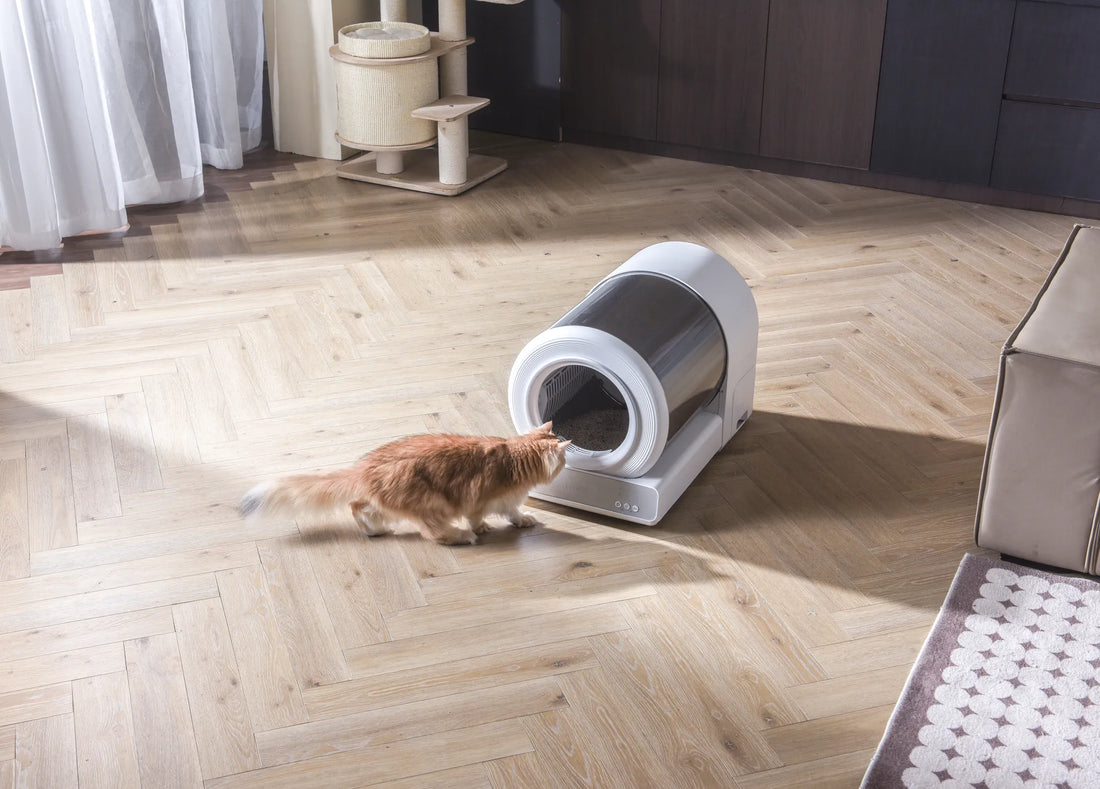If your cat suddenly won't use the litter box, it can be a frustrating and concerning experience for any pet owner. This behavior can stem from a variety of reasons, ranging from health issues to environmental changes. Understanding the root cause is essential to finding the right solution and restoring harmony in your home.
Health Issues
One of the most common reasons a cat suddenly stops using the litter box is due to underlying health problems. Cats are known for their ability to hide discomfort, so any sudden change in behavior should be taken seriously. Urinary tract infections, kidney disease, and arthritis are just a few conditions that can make it painful or difficult for your cat to use the litter box.
If you notice your cat straining to urinate, crying out in pain, or producing very little urine, it's crucial to consult a veterinarian immediately. These symptoms could indicate a serious condition that requires prompt medical attention. Early diagnosis and treatment can prevent complications and help your cat return to its normal routine.
Stress and Anxiety
Cats are creatures of habit, and any disruption to their environment can cause stress and anxiety. Moving to a new home, introducing a new pet, or even rearranging furniture can make your cat feel unsettled. This emotional distress can lead to changes in behavior, including avoiding the litter box.
To help your cat cope with stress, try to maintain a consistent routine and provide a safe, quiet space where it can retreat. Using pheromone diffusers or calming sprays can also help reduce anxiety. If the stressor is unavoidable, such as a new baby or pet, gradually introduce the change and give your cat time to adjust.
Litter Box Preferences
Cats can be quite particular about their litter box preferences. If your cat suddenly won't use the litter box, it might be due to dissatisfaction with the type of litter, the cleanliness of the box, or its location. Some cats prefer unscented litter, while others may dislike certain textures. Similarly, a dirty litter box can deter your cat from using it.
Experiment with different types of litter to see which one your cat prefers. Ensure the litter box is cleaned regularly, ideally once a day. The location of the litter box is also important; it should be placed in a quiet, easily accessible area away from noisy appliances or high-traffic zones.
Multiple Cats in the Household
In households with multiple cats, competition or territorial disputes can lead to litter box avoidance. If one cat is bullying another, the victim may avoid the litter box altogether. Additionally, some cats may refuse to share a litter box, preferring to have their own.
To address this issue, provide one litter box per cat, plus an extra one. This ensures that each cat has its own space and reduces the likelihood of conflicts. Observing your cats' interactions can also help identify any bullying behavior, allowing you to intervene and create a more harmonious environment.
Environmental Changes
Changes in your cat's environment, such as new furniture, different cleaning products, or even a change in your daily routine, can affect its litter box habits. Cats are sensitive to their surroundings, and even minor changes can cause stress or confusion.
If you've recently made changes to your home, try to identify any potential triggers that might be affecting your cat. Reverting to familiar products or routines can help your cat feel more secure. Additionally, providing extra attention and reassurance can ease the transition and encourage your cat to return to its normal habits.
Age-Related Issues
As cats age, they may experience physical or cognitive changes that affect their ability to use the litter box. Arthritis can make it difficult for older cats to climb into a high-sided litter box, while cognitive decline can lead to confusion or forgetfulness.
To accommodate an aging cat, consider using a litter box with lower sides for easier access. Placing the litter box in a familiar, easily accessible location can also help. Regular veterinary check-ups are essential to monitor your cat's health and address any age-related issues promptly.
Behavioral Problems
Sometimes, a cat's refusal to use the litter box is purely behavioral. This can be due to past negative experiences, such as being startled while using the box, or simply a lack of proper training. In some cases, cats may develop a preference for eliminating in a specific area outside the litter box.
Addressing behavioral issues requires patience and consistency. Reinforce positive behavior by rewarding your cat with treats or praise when it uses the litter box correctly. If your cat has developed a preference for a specific area, try placing a litter box in that location and gradually moving it to a more suitable spot.
Understanding why your cat suddenly won't use the litter box is the first step toward resolving the issue. By identifying the underlying cause and implementing the appropriate solutions, you can help your cat return to its normal habits and maintain a clean, stress-free environment for both you and your pet.













